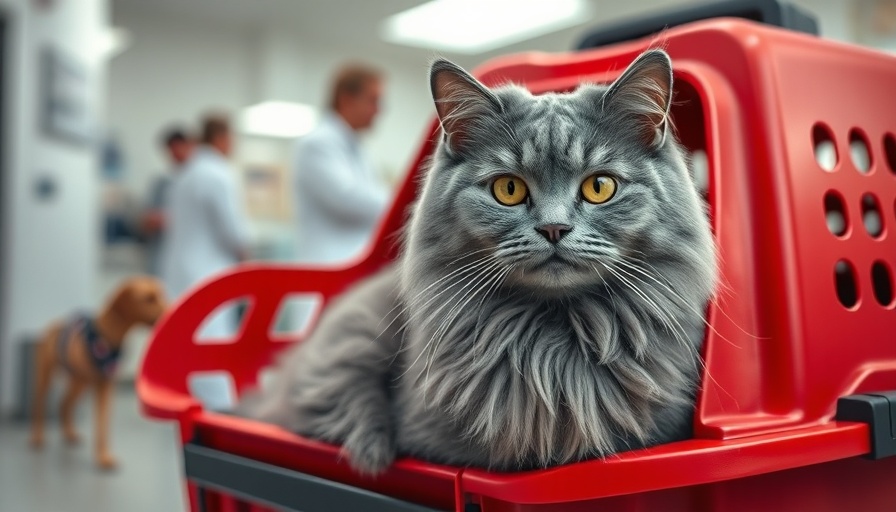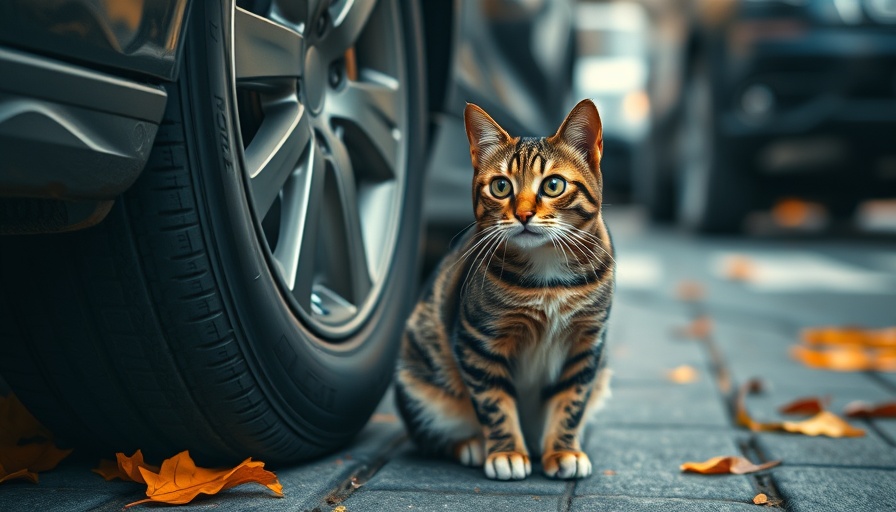
Understanding the Veterinary Experience for Pets
When you take your feline friend to the vet, you might expect a friendly visit. However, it’s essential to recognize that not all animals respond well to the environment. Cats, especially, can become anxious with various sounds, unfamiliar smells, and the presence of other animals. Therefore, assuming your pet will behave perfectly at the clinic is a misconception that could lead to mishaps.
Why Leashes are Non-Negotiable for Every Visit
A common mistake pet owners make is ignoring the necessity of a leash during their vet trips. Even the most docile pets can be unpredictable. In the chaos of a waiting room, unexpected encounters, and the anxiety of other animals can trigger reactions in your pet. Ensuring your dog or cat is leashed keeps both them and other animals safe, reducing the risk of stress and injury.
The Importance of Using a Carrier for Your Cat
While it may seem unnecessary to use a carrier for a routine vet visit, it's absolutely vital, especially when transporting small pets like cats or rabbits. A carrier provides a secure environment for your pet during travel, allowing them to feel protected from the chaotic world outside. It also facilitates easier handling for the veterinary staff, thereby ensuring a smooth process. Opting for carriers with top and front access, such as the Frisco Two-Door Top-Load Dog and Cat Kennel, can significantly ease the experience for your pet.
Common Misconceptions That Lead to Stressful Visits
Many pet owners believe their pets will adapt quickly to the vet clinic atmosphere, leading them to make poor choices. Not using a leash or a carrier when entrusted to the vet's office can create a dangerous situation. Remember, the clinic can be full of anxious animals, and your carefree attitude could put your pet and others at risk. Additionally, failing to disclose a pet’s anxiety history or first-time visit can lead to misunderstandings that might stress out both parties involved.
Emotional and Human Interest Perspectives
Taking a pet to the vet can bring up a range of emotions for pet owners. The anxiety of seeing your beloved pet stressed is painful, but it’s crucial to prepare them for this experience. Reflecting on techniques that can help calm them, such as using calming pheromones or familiar blankets during the visit, can aid in managing their anxiety. Sharing stories within community forums can also provide support and insights into better managing future vet trips.
Future Trends in Veterinary Visits
As the veterinary industry evolves, more practices are embracing the Fear-Free movement, which focuses on reducing pet anxiety during veterinary visits. This initiative encourages creating a more welcoming environment, enriching the pet-owner experience significantly. Utilizing technology, services like telehealth appointments are rising, allowing for initial consultations from the comfort of your home.
Actionable Insights for Stress-Free Vet Visits
To ensure a calm and productive visit, pet owners should take proactive steps. Here are some tips for making a vet visit less stressful for both you and your pet:
- Familiarize your pet with their carrier well before the appointment.
- Practice short car rides to reduce anxiety about the travel experience.
- Keep your contact information updated in case of emergencies.
- Bring treats along to reward calm behavior during the visit.
Conclusion: Ensuring a Safer Visit for Your Furry Friends
Your cat lands in the vet's office not just for medical help but also for assurance and care. Proper preparation can make all the difference in making your next vet visit a positive experience. By understanding the needs of pets and advocating for environments that prioritize their comfort, we foster a sense of safety and security. Remember, a little foresight goes a long way in keeping our furry friends happy and healthy!
 Add Row
Add Row  Add
Add 


Write A Comment